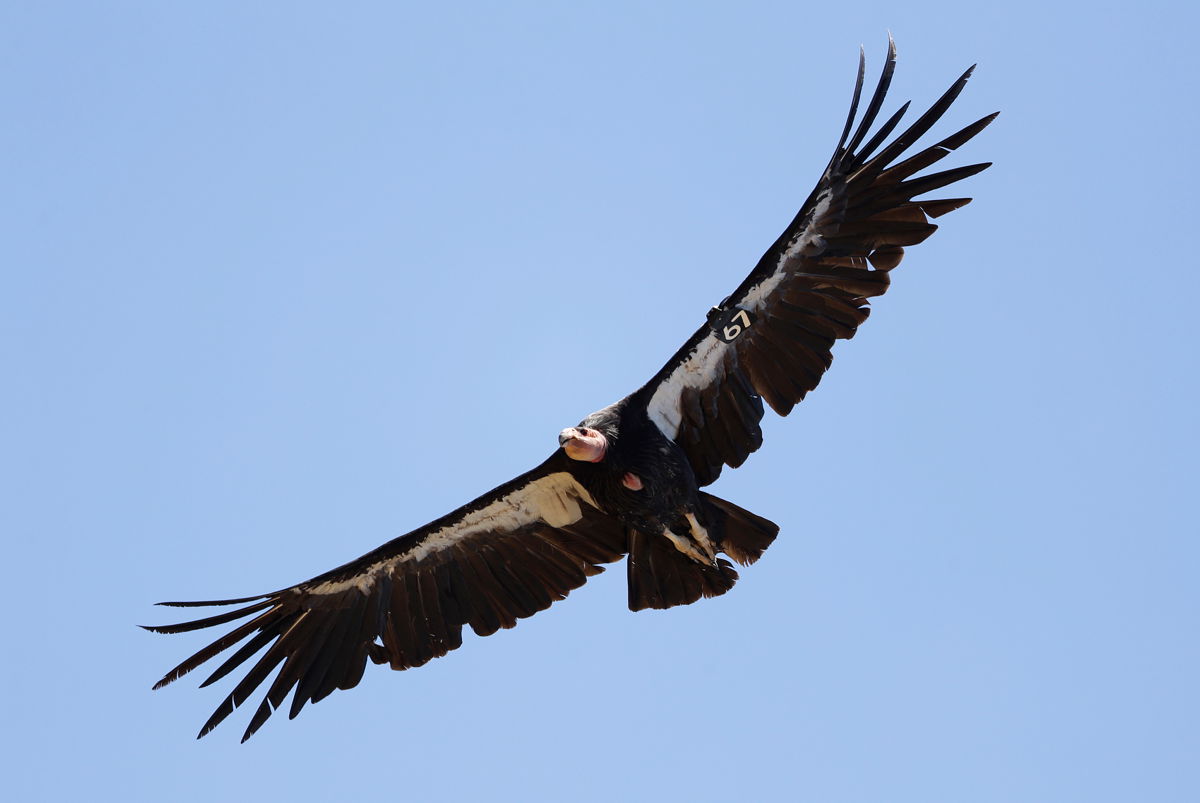21 critically endangered California condors have died from avian flu

The avian flu outbreak has set back California condor recovery efforts by at least a decade
By Zoe Sottile, CNN
A species that conservationists once saved from the brink of extinction is now facing a new powerful threat: avian flu.
In a little more than a month, 21 critically endangered California condors have died of avian flu, according to a Friday news release from the US Fish and Wildlife Service.
The disease has been found in northern Arizona, among the bird’s Southwest flock, which straddles the Arizona-Utah border, says the service. Avian flu has not yet been confirmed among any condors in Utah, California, or Baja California, Mexico.
The deceased birds, which officials counted from March 30 to May 5, included eight breeding pairs, according to the news release. Four condors with avian flu are currently recovering at Liberty Wildlife, an Arizona wildlife rescue.
The deaths have likely set conservation efforts back by a decade or more, the Peregrine Fund, which manages the Southwest flock, told CNN in an email.
“Because the Condor is slow to mature, taking up to eight years before they can produce young, and with an average of one young every other year,” even a single loss in the wild can have “a big impact,” said Chris Parish, the non-profit’s president and CEO. “This will change recovery as we know it.”
“We will need to double down on causes of mortality that we can control or change rates of, like lead poisoning, and be better prepared with (hopefully) vaccines and greater infrastructure to respond to events like this in the future,” he went on.
The US Fish and Wildlife Service has said it was working to manage the outbreak and may consider vaccinating the endangered birds.
The Peregrine Fund added it wasn’t sure how influenza entered the condor population. The organization explained that condors are important to preserve because they “provide a critical ecological service” by “eating dead animals that can be a source of disease transmission to other wildlife, livestock, and even humans.”
The species are also considered sacred to the Yurok Tribe, California’s largest Native American tribe.
The condors, which are one of the world’s largest birds with a wingspan of 9.5 feet, almost went extinct in the 1980s, according to the US Fish and Wildlife Service. By 1987, the tiny population of condors left in the wild was placed into a captive breeding program in an attempt to bring the species back from the brink.
In 1992, the service began releasing captive-born condors into the wild. The population has slowly started to bounce back: As of 2020, there were a total of 504 condors in the world with 175 living in captivity and 329 living in the wild, according to a report from the Department of the Interior.
But they still face serious threats, including lead poisoning, which the birds contract after scavenging on animals that have been shot with lead ammunition.
Experts have said this may be one of the deadliest outbreaks of avian flu ever in the US. The disease has affected almost 60,000 captive poultry across 47 states, according to the Centers for Disease Control and Prevention. Risk to humans is limited — only one human infection has been detected in the US, says the CDC.
The-CNN-Wire
™ & © 2023 Cable News Network, Inc., a Warner Bros. Discovery Company. All rights reserved.



